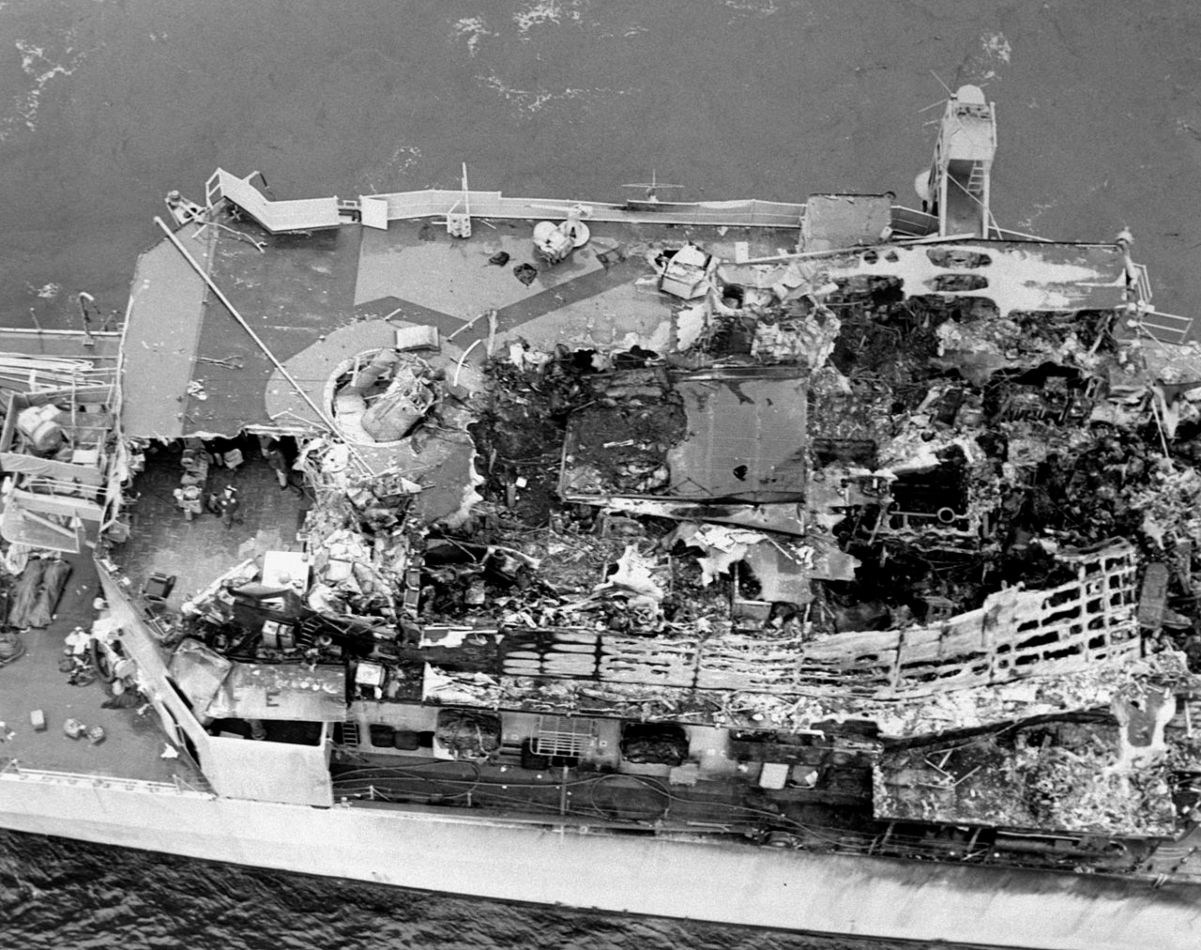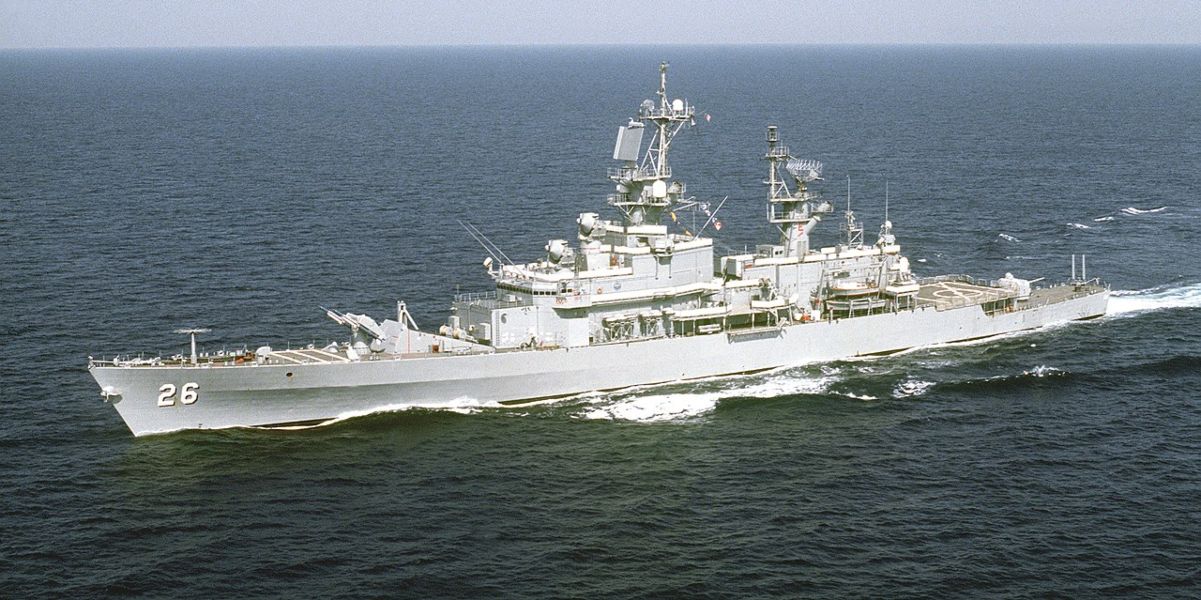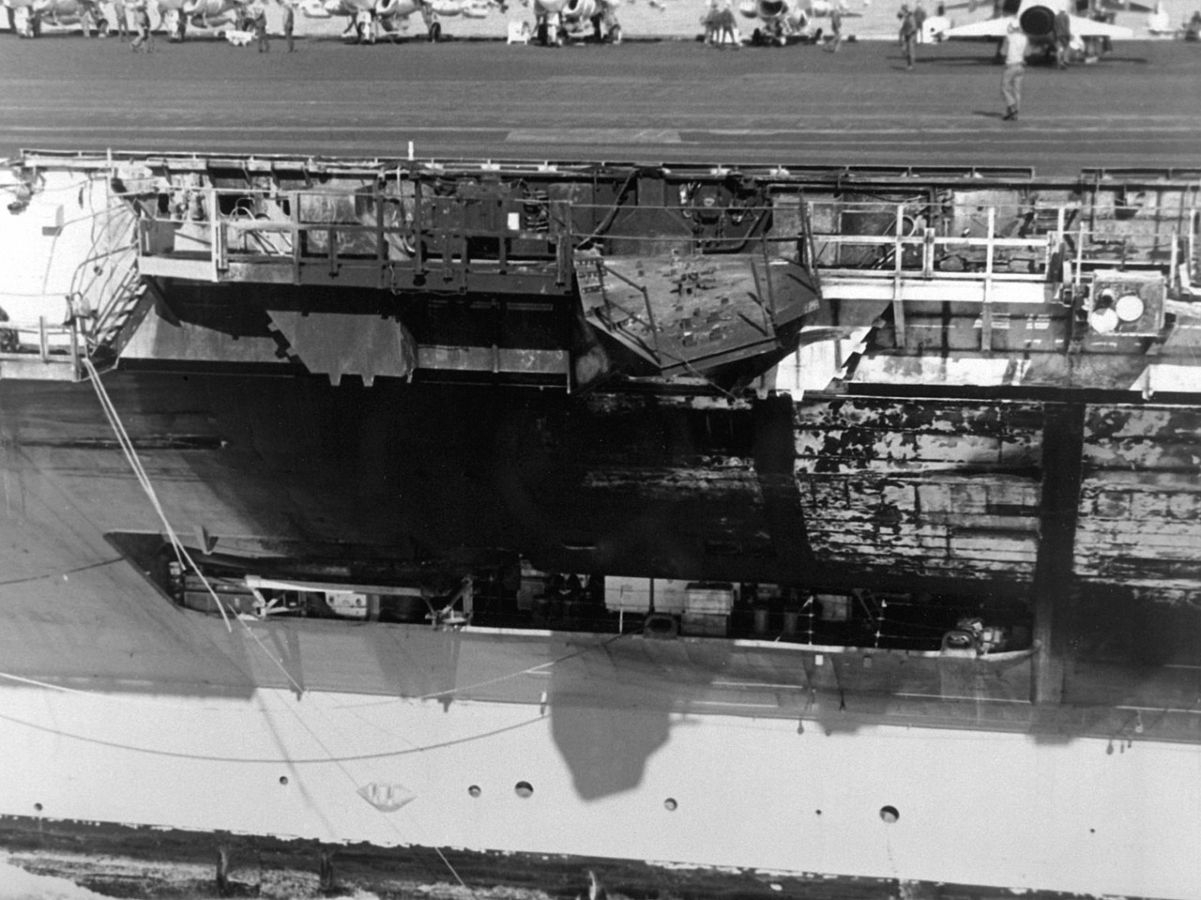JFK collides with USS Belknap Guided Missile Cruiser
John F. Kennedy (CV-67) was laid down on 22 October 1964 at Newport News, Va., by the Newport News Shipbuilding & Dry Dock Company; launched on 27 May 1967; sponsored by Miss Caroline Kennedy, daughter of the late President John Fitzgerald Kennedy; and commissioned at Newport News on Sep. 7, 1968, Captain Earl P. Yates in command.
On the night of Nov. 22, 1975, the twelfth anniversary of the assassination of its namesake, USS John F. Kennedy aircraft carrier collided with USS Belknap (CG 26) Guided Missile Cruiser in heavy seas off the coast of Sicily, in the Mediterranean Sea. According to Shraderlaw, the collision started fires on Belknap which spread rapidly. Other ships in the area, hampered by the sea conditions, struggled to assist the stricken vessel. Belknap’s aluminum superstructure could not withstand the heat of the fire; it rapidly melted and collapsed. The fires were not brought under control until the next day, and Belknap was not in a seaworthy condition when they were. Seven sailors died on Belknap, and one John F. Kennedy, with another 47 Belknap crew members injured.
JFK aka The Can Opener
‘The nickname for the JFK became “The Can Opener” and for good reason,’ says Paul Montgomery, Boiler/Eng Controls USS JFK CV67 (79-81), on Quora.
‘The JFK was doing night flight ops and would have been traveling at near 30 knots because of this. US Carriers have to have at least 25 knots to launch and recover planes.
‘The ship it smashed into, the USS Belknap was along side at around 1500 yards when there was some confusion as to an order the captain gave. He intended to slow and make a left (port) turn behind the JFK. A junior officer took the order to mean “hard left turn” which cut right in front of the JFK. Luckily it was not a broadside. Here the story is vague even after just two years and me asking crew that was on the JFK at the time. What I have concluded is that the Belknap had time to turn her course about 120 degrees and nearly pass in front of the JFK before contact. Here is the resulting damage to the Belknap.


‘This is what she looked like before.’

7 sailors lost, six on the Belknap and one on the JFK
Montgomery continues;
‘The JFK did not hit the ship with the bow. Had it done this, the Belknap would have most likely sunk in two parts. The Belknap is a guided missile cruiser and not a small ship. They dwarf Destroyers, Frigates and Escorts. All the damage was done by the superstructure on the underside of the Kennedy. Here is what she looked like.

‘A refueling line carrying Jet Fuel was ruptured on the JFK during the collision and sprayed fuel over and into the Belknap which caused a raging fire, a boiler to explode and munitions to cook off.
‘You should not get the idea that aircraft carriers are tougher than other warships, they are not. Had the JFK plowed into the Belknap broadside, the ships bow would have been punctured near the water line and she would have taken on water. How much would depend on the ships condition state. During general quarters, all watertight door are kept closed and flooding would have been minimal. Still, the ship would have been severely crippled in the speed it could make.
‘Seven sailors lost their lives that night, six on the Belknap and one on the Kennedy.’
Belknap re-commissioned
After the fire, the hull was basically intact but the ship’s superstructure was totally destroyed. Belknap was towed back to the US, where it was decommissioned and entered the Philadelphia Naval Shipyard. Over the course of the next four years, the ship was rebuilt from the weather deck up.
After rebuilding was complete, Belknap was re-commissioned and returned to service in 1980. The ship played a role in several major deployments over the remainder of its active career, including the American intervention in Lebanon in 1983 and as the flagship of the Sixth Fleet in 1985 and 1986. In 1989 Belknap served as an accommodation vessel for the President of the United States, George H. W. Bush, during his meeting at Malta with Soviet President Mikhail Gorbachev.
Belknap continued to serve in the Atlantic Fleet until decommissioned in 1995. In 1998 the ship was sunk by naval gunfire in a training exercise. Because of the disastrous fire in 1975, it was decided that all future cruisers would be built with steel superstructures, a decision reinforced when HMS Sheffield, a British ship with an aluminum superstructure, was destroyed largely by fire after being struck by an Exocet missile during the Falklands War.
Photo by U.S. Navy

